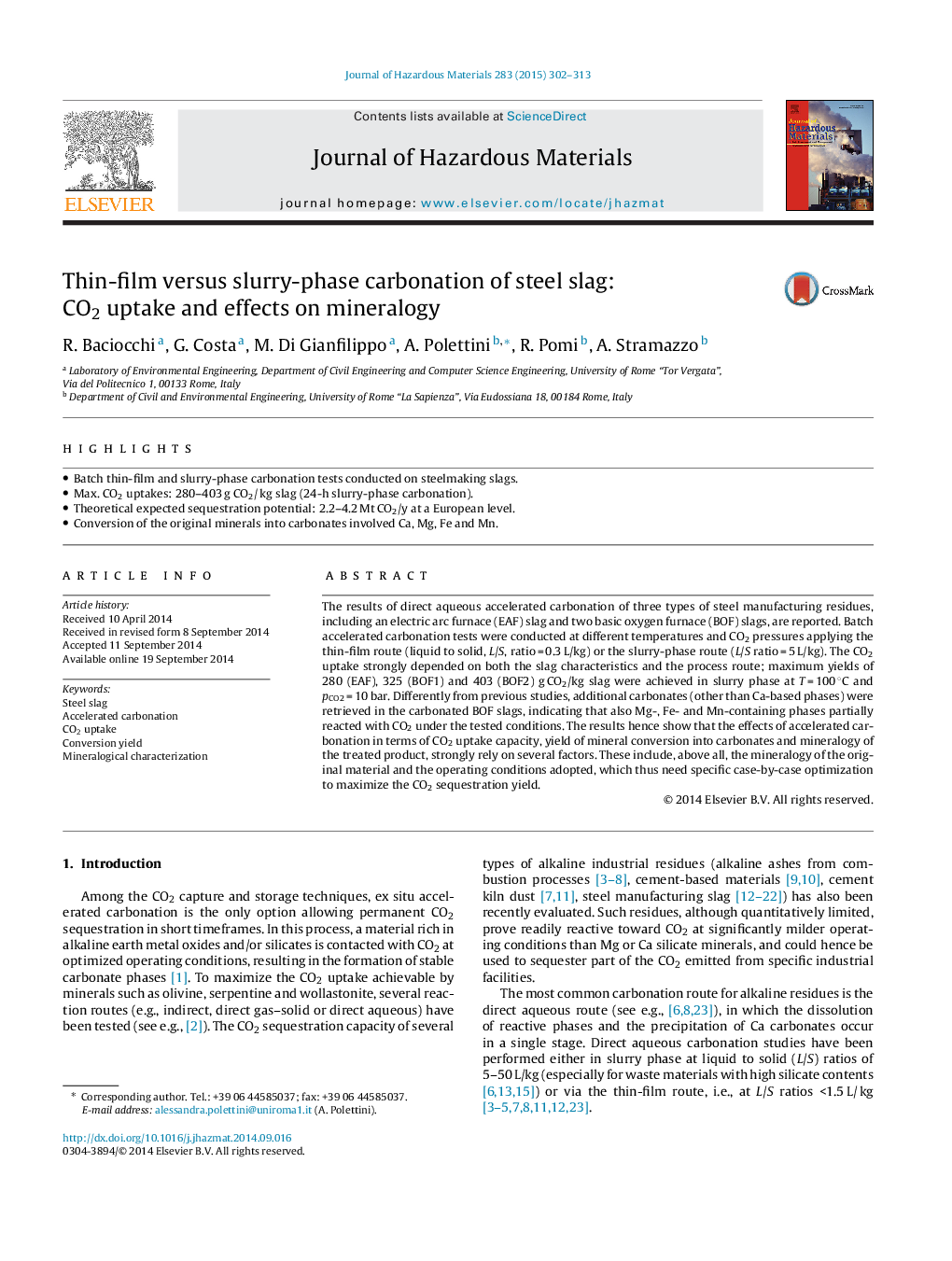| Article ID | Journal | Published Year | Pages | File Type |
|---|---|---|---|---|
| 576273 | Journal of Hazardous Materials | 2015 | 12 Pages |
Abstract
The results of direct aqueous accelerated carbonation of three types of steel manufacturing residues, including an electric arc furnace (EAF) slag and two basic oxygen furnace (BOF) slags, are reported. Batch accelerated carbonation tests were conducted at different temperatures and CO2 pressures applying the thin-film route (liquid to solid, L/S, ratio = 0.3 L/kg) or the slurry-phase route (L/S ratio = 5 L/kg). The CO2 uptake strongly depended on both the slag characteristics and the process route; maximum yields of 280 (EAF), 325 (BOF1) and 403 (BOF2) g CO2/kg slag were achieved in slurry phase at T = 100 °C and pCO2 = 10 bar. Differently from previous studies, additional carbonates (other than Ca-based phases) were retrieved in the carbonated BOF slags, indicating that also Mg-, Fe- and Mn-containing phases partially reacted with CO2 under the tested conditions. The results hence show that the effects of accelerated carbonation in terms of CO2 uptake capacity, yield of mineral conversion into carbonates and mineralogy of the treated product, strongly rely on several factors. These include, above all, the mineralogy of the original material and the operating conditions adopted, which thus need specific case-by-case optimization to maximize the CO2 sequestration yield.
Related Topics
Physical Sciences and Engineering
Chemical Engineering
Chemical Health and Safety
Authors
R. Baciocchi, G. Costa, M. Di Gianfilippo, A. Polettini, R. Pomi, A. Stramazzo,
